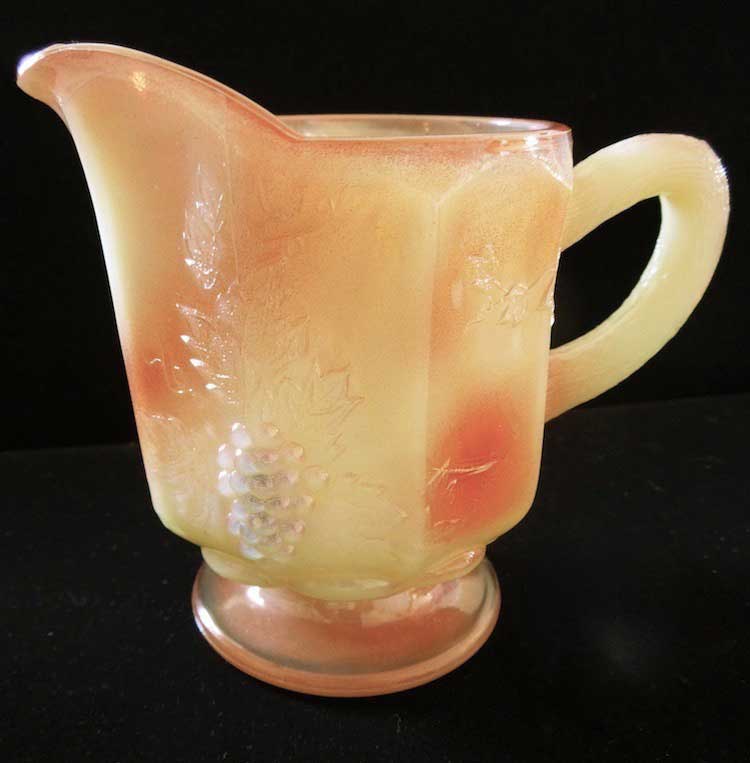April 2023
Good Eye
Mould shopping and swapping in American glass
by Peggy Whiteneck
Moulded Glass
One of the challenges in collecting American art glass is identifying the maker, given the amount of mould swapping that took place between companies. This usually happened when a glass company went out of business and remaining companies acquired their moulds at auction. For example, a Kokomo (in business 1900-1905 and named for its Indiana town) Paneled Grape Creamer was made later by Westmoreland and a version was also sold by retailer LG Wright, for whom many companies produced glass.
For early 20th century glassmakers such as Fenton, Atterbury, Indiana, and others, glass moulds were made of cast iron, so buying and transporting them from one company to another was no easy feat. For example, the mould to make Fenton’s “Alley Cat” weighs 250 pounds – and that was one of the lighter ones! The 11” Alley Cat began its life with U.S. [Tiffin] Glass in the 1930s and was named “Sassie Susan.” Tiffin made it in two colors, black and white. Fenton acquired the mould from U.S. Glass in the mid-1960s and brought out its first Alley Cat in 1970, since made in numerous colors.
In researching this article, I found out that the smaller Happy Cat mould, today owned by the Fenton Art Glass Collectors of America [FAGCA], also began its life with Tiffin,* which made it in cold-painted black. I have also seen the mould for Fenton’s Donkey and Cart attributed both to U.S. [Tiffin] Glass and Duncan & Miller, but I’m skeptical of the Tiffin attribution because it seems to have a pony drawing the wagon vs the long, forward projecting ears of the donkey in the Duncan & Miller and Fenton versions.
Sometimes, mould swapping would involve more than two companies. For example, the Fenton Butterfly Box (model #6940) originated with Verlys, then passed to Hollophane before being acquired by Fenton, whose first production of it was around 2005.
Acquiring a mould didn’t necessarily mean success in using it. An example is the large Chanticleer rooster (model #5077) that began its life from a Fostoria mould in the 1950s before it was acquired by Fenton in 2004. Fenton experienced some of the same problems Fostoria did with this gorgeous but elaborate model: the tails simply didn’t want to come out of the mould without breaking. Glass formula didn’t seem to make a difference; Fostoria’s milk glass version had the same problems as Fenton’s Periwinkle Blue version, and Fenton never tried the model again.
Since the closing of its factory, the Fenton family has retained several of its moulds, occasionally renting them out to other glassmakers such as John and Ann Fenton (not related to the Fenton factory family) in Springfield, MO. While that company at first borrowed moulds from Fenton to make glass from Fenton cullet, John also makes his own glass models and Ann is a glass painter.

Kokomo Glass
Both the NFGS and FAGCA use Mosser Glass to create new issues from moulds the clubs acquired from Fenton. FAGCA has contracted with Davis-Lynch to make the Amphora vase. The National Stretch Glass Society has also acquired the Fenton Melon Rib #847 bowl and cover and the #1532 twin dolphin candy jar and cover. As you can see, original glass moulds are still making the rounds to keep collectors happy!
*As confirmed by FAGCA Board President, C.C. Hardman.
Peggy Whiteneck is a writer, collector, and dealer living in East Randolph, VT. If you would like to suggest a subject that she can address in her column, email her at allwritealready2000@gmail.com.

